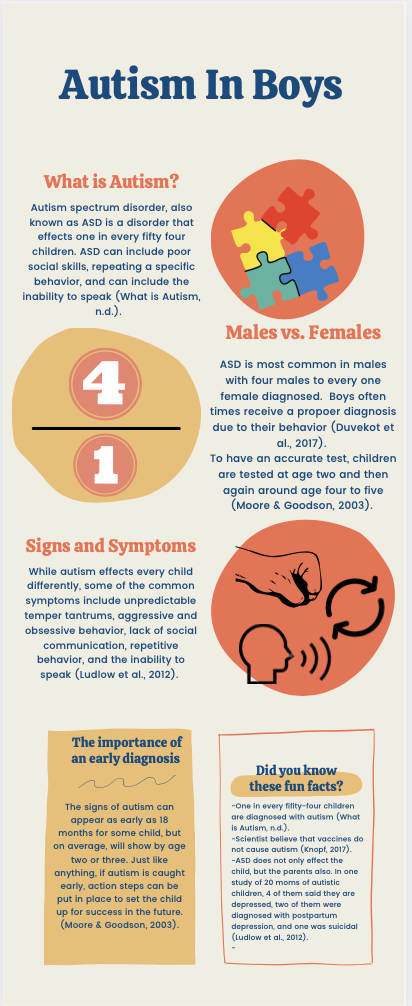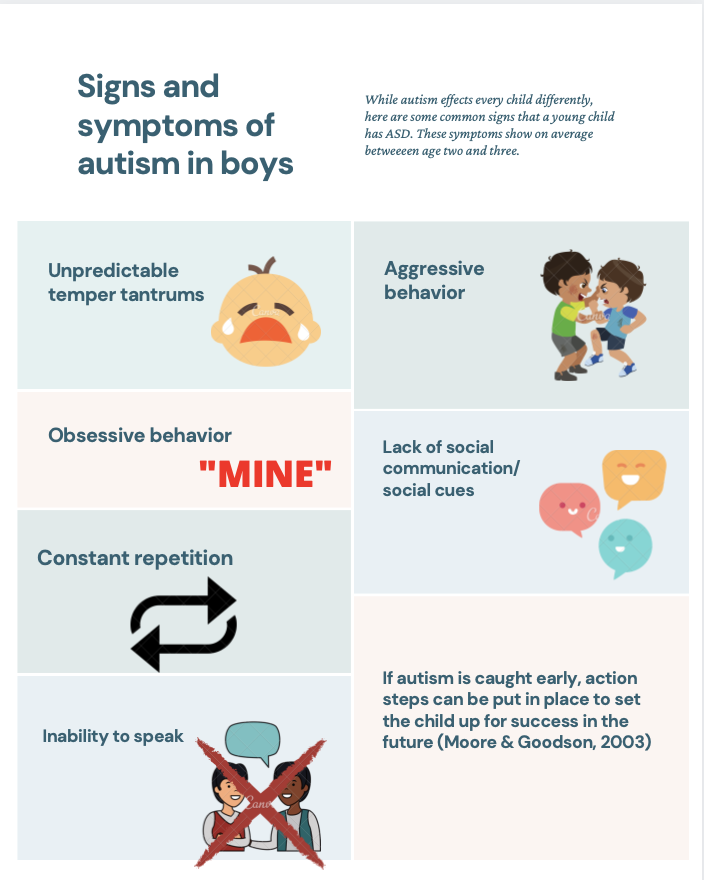Comprehending the Effect of Behavioral Autism on Daily Life and Social Interactions
You could not understand just how deeply behavior autism impacts every day life and social interactions. Individuals on the range typically navigate a world loaded with communication hurdles and sensory overload. These difficulties can cause frustration and isolation, influencing their partnerships and total wellness. Comprehending these nuances is important for cultivating supportive environments. What strategies can we apply to create even more significant links and inclusive spaces? The solutions may surprise you.
Specifying Behavioral Autism and Its Characteristics
Behavior autism, typically referred to as autism range disorder (ASD), encompasses a variety of conditions defined by obstacles in social interaction, interaction, and repeated habits. You might observe that people with ASD frequently struggle to translate social hints, which can lead to misunderstandings in conversations. They might find it difficult to develop eye contact or participate in tiny talk, making social circumstances really feel frustrating.
Communication difficulties can manifest in different methods, from delayed speech advancement to a preference for utilizing fewer words. Recurring actions, such as hand-flapping or rocking, can act as coping systems to handle stress and anxiety or sensory overload. These attributes can greatly influence life, making it vital for you to recognize and sustain those with ASD. By acknowledging these attributes, you can promote an atmosphere that advertises acceptance and encourages effective communication, helping individuals with autism thrive in their daily interactions.
The Range of Autism: Comprehending Irregularity in Actions
Autism range condition (ASD) isn't a one-size-fits-all diagnosis; it varies widely amongst individuals. You might observe that some people with ASD exhibit moderate signs, while others may encounter a lot more considerable challenges. This irregularity can manifest in habits, interests, and sensory level of sensitivities. You may experience people who are highly verbal and involve quickly in conversations, while others may choose solitary activities or connect non-verbally.
Additionally, the way individuals with ASD respond to sensory input can vary considerably; some could be overwhelmed by loud sounds or brilliant lights, whereas others prosper in boosting settings. The range additionally consists of differences in social communications; some individuals might struggle to interpret social signs, while others navigate social setups with family member ease. Recognizing this variability is essential, as it helps you appreciate everyone's unique experience and dressmaker support to their particular needs, fostering a much more comprehensive environment for every person.
Communication Difficulties Dealt With by People With Autism
When you interact with people on the autism spectrum, you may see their one-of-a-kind interaction difficulties. They usually face problems with both nonverbal and verbal hints, which can influence their social communications. Understanding these barriers is essential for promoting much better links and support.

Verbal Interaction Troubles
Several individuals on the autism spectrum experience spoken interaction troubles that can substantially impact their daily interactions. You might find it challenging to express your thoughts, feelings, or requires plainly. This can result in disappointment for both you and those around you, as misunderstandings happen. You may have problem with starting conversations, maintaining a subject, or comprehending subtleties in speech. Usually, you could favor making use of straightforward language or repetitive expressions, which can restrict your ability to engage in deeper discussions. Your rate, tone, or volume could not align with social expectations, creating others to misunderstand your intents. Recognizing these obstacles can assist you and your support network develop methods to enhance communication and cultivate far better connections with others in your life.
Nonverbal Communication Barriers
Spoken communication isn't the only difficulty people on the autism range face; nonverbal communication obstacles can be just as substantial. These obstacles can lead to misunderstandings or misconceptions of social signs, making interactions really feel complex or frustrating. By addressing nonverbal interaction, you can locate methods to enhance your social experiences and improve your overall quality of life.
Social Communication Effects
Social communications can often feel overwhelming because of the unique communication obstacles faced by people with autism. You may battle with translating social hints, making it tough to comprehend sarcasm or body movement. This can result in misunderstandings or awkward minutes in discussions. Furthermore, starting and preserving conversations may really feel difficult, triggering stress and anxiety in social circumstances. You might like organized environments, making spontaneous interactions uneasy. It's additionally common to experience difficulty in taking part in tiny talk, which can hinder developing new friendships. Identifying these challenges can aid you find techniques to enhance communication, such as exercising social abilities in secure setups or utilizing visual help - Aba Therapist. Comprehending your needs allows you to navigate social interactions with greater self-confidence and convenience.
Social Interaction and Relationship Building in Autism
While building relationships can be testing for individuals with autism, recognizing their special viewpoints and interaction styles can foster significant links. You could notice that numerous individuals on the spectrum like straight interaction and may have problem with social hints or little talk. By being straightforward in your communications, you can assist produce an environment where they really feel comfy.
Put in the time to observe and listen how they express themselves. This understanding can lead you in guiding discussions a lot more effectively. Engaging in shared rate of interests can likewise act as a bridge to Visit This Link deeper connections. Whether it's a hobby, a favorite show, or a common passion, these usual strings can open up doors to relationship.
Daily Life Routine: Browsing Methods and challenges
Steering every day life routines can be particularly testing for individuals with autism, especially when unanticipated modifications occur. You may discover convenience in having an organized timetable, as it aids you anticipate what's next. It's typical to really feel overwhelmed or anxious when interruptions occur. To browse these difficulties, consider carrying out visual timetables or lists. These devices can offer clarity and confidence.
Developing a regimen that consists of sensory breaks can also be beneficial. This assists produce an understanding setting.
Lastly, technique mindfulness methods to manage anxiety and anxiousness. Basic breathing exercises or basing methods can make a considerable distinction. By including these strategies, you can improve your daily routine and lessen disruptions, making life feel a lot more convenient.
Strengths and Capabilities of People on the Autism Range
Understanding every day life regimens is simply one facet of the autism experience. Numerous individuals on the autism range have remarkable strengths and abilities that establish them apart. You could discover that your interest to detail is remarkable, enabling you to master jobs that need accuracy and emphasis. Your capability to think outside the box can result in ingenious services in various circumstances.
Furthermore, your memory abilities often beam, especially in locations of rate of interest. Autism Behavioral Therapy. This propensity for retaining info can make you a beneficial resource in areas like scientific research, art, or technology. You may additionally show strong visual reasoning, enabling you to visualize intricate concepts and address issues creatively
In addition, your special point of view on the world can cultivate empathy and understanding in others, improving social communications. Accepting these strengths not just boosts your self-confidence yet additionally aids others value the diverse skills you offer the table.
Producing Comprehensive Settings for Individuals With Autism
Producing comprehensive environments for people with autism starts with designing sensory-friendly rooms that accommodate their unique demands. You can also cultivate opportunities for social communication, helping to build connections and relationships. By making these changes, you'll add to an extra welcoming environment for everyone.
Designing Sensory-Friendly Spaces
While designing sensory-friendly areas, it's vital to review the unique requirements of people with autism. Beginning by choosing relaxing shades and soft lighting to produce a soothing setting. Incorporate quiet zones where people can reenergize and retreat when overwhelmed. You'll intend to reduce loud sounds and interruptions, using soundproof materials or white noise machines to aid keep harmony. Think about tactile aspects like soft fabrics or fidget-friendly items that can give convenience. Establish that spaces are adaptable, permitting easy rearrangement to suit various tasks. Consist of aesthetic timetables or clear signage to help individuals navigate the space confidently. By thoughtfully incorporating these aspects, you can produce a welcoming environment that supports sensory needs and advertises total wellness.
Advertising Social Communication Opportunities
Creating sensory-friendly areas not only addresses specific comfort but likewise sets the phase for significant social communications among individuals with autism. To promote these communications, produce comprehensive settings that welcome involvement. Arrange structured activities, like art courses or group video games, that motivate cooperation without overwhelming sensory input. Usage visual help official source and clear communication to aid every person engage comfortably. Motivate peer mentoring, combining individuals with autism with encouraging peers that can guide them via social scenarios. In addition, think about hosting regular neighborhood occasions that celebrate neurodiversity, cultivating approval and understanding amongst all participants. By implementing these approaches, you can boost social chances, aiding people with autism build friendships and reinforce their social abilities in a secure, welcoming setting.

Often Asked Questions
Exactly How Can Pals Support A Person With Behavioral Autism?
You can sustain a close friend with behavior autism by holding your horses, paying attention actively, and respecting their boundaries. Involve in tasks they enjoy, communicate openly, and develop a comfy atmosphere where they really feel valued and comprehended.
What Resources Are Available for Parents of Children With Autism?
You can discover different sources for parents of children with autism, consisting of support system, instructional web sites, and local community services. Getting in touch with other moms and dads can likewise supply useful insights and shared experiences to assist browse challenges.
Can Behavioral Autism Adjustment In Time?

Yes, behavior autism can alter in time. You could see changes in interaction, social skills, and actions as your youngster expands. Early treatment and assistance commonly play essential duties in these developmental adjustments.
Exactly How Do Sensory Level Of Sensitivities Affect Day-to-day Live?
Sensory sensitivities can make everyday experiences frustrating. You might have problem with loud sounds or intense lights, causing stress and anxiety or avoidance. Discovering environments that fit your requirements can substantially improve your convenience and total life.
What Prevail Misconceptions About Behavioral Autism?
You might think behavioral autism just influences interaction skills, however it's more complex. Numerous think people lack compassion or knowledge, which isn't true. Comprehending these false impressions assists foster acceptance and support for those on the range.
Behavioral autism, typically referred to as autism range problem (ASD), incorporates a range of conditions characterized by challenges in social communication, interaction, and repeated habits.Social communications can usually feel frustrating due to the special communication difficulties faced by people with autism.Creating sensory-friendly areas not only addresses specific convenience however also establishes the stage for purposeful top article social communications among people with autism. Urge peer mentoring, pairing individuals with autism with encouraging peers who can assist them via social situations. By carrying out these strategies, you can improve social possibilities, aiding individuals with autism build friendships and enhance their social skills in a safe, inviting setting.